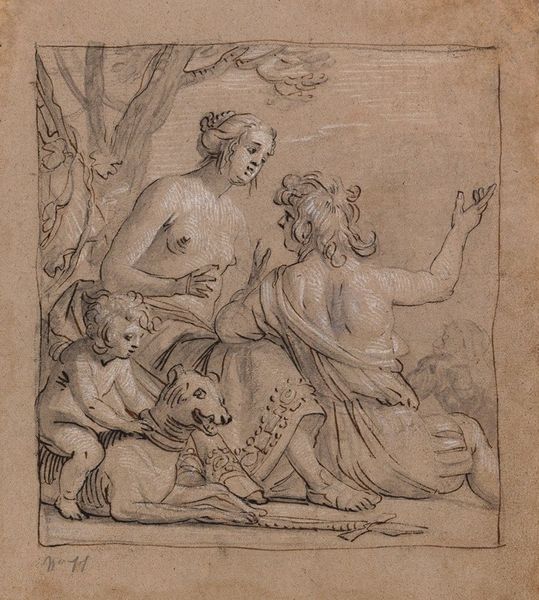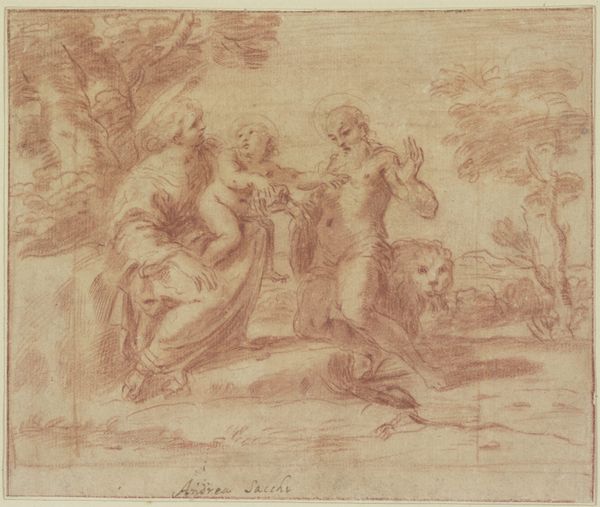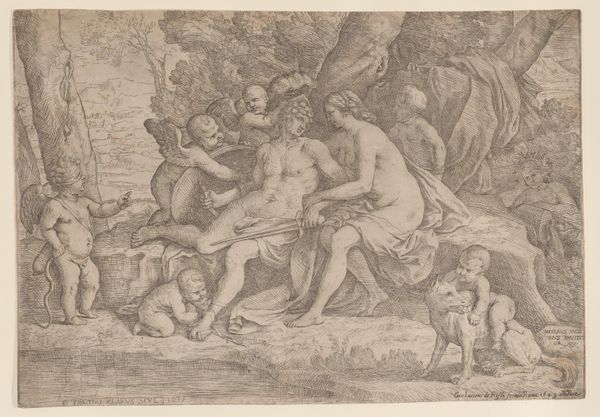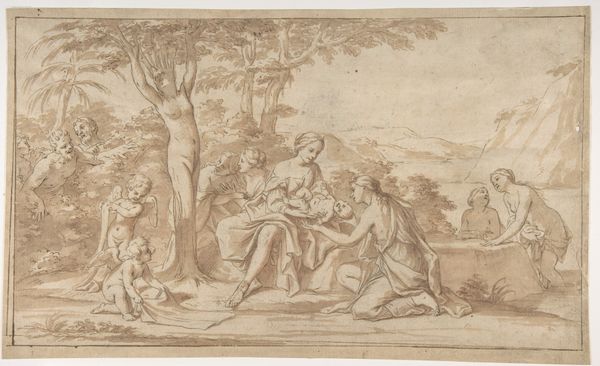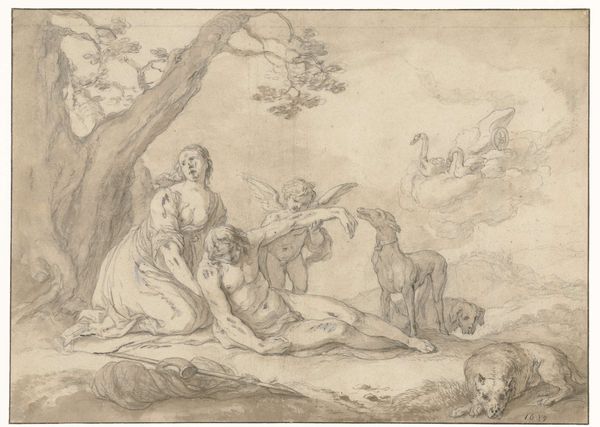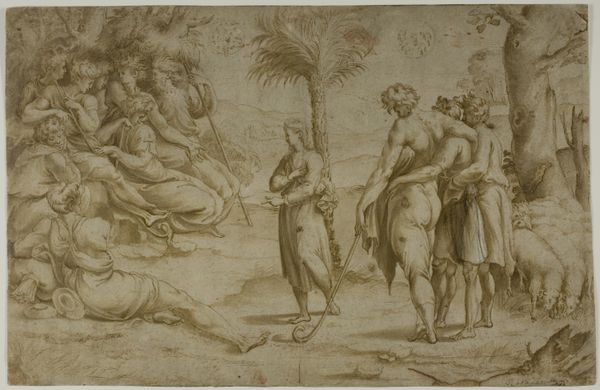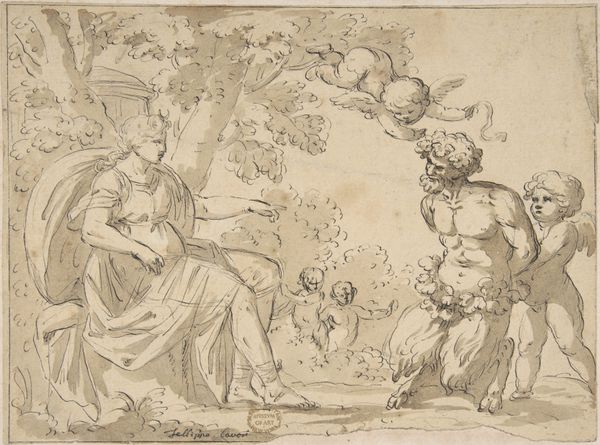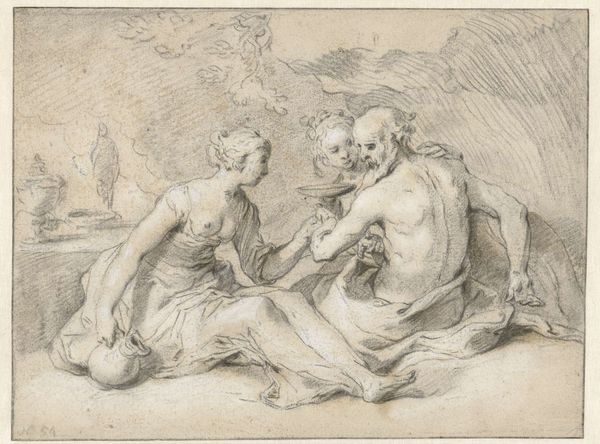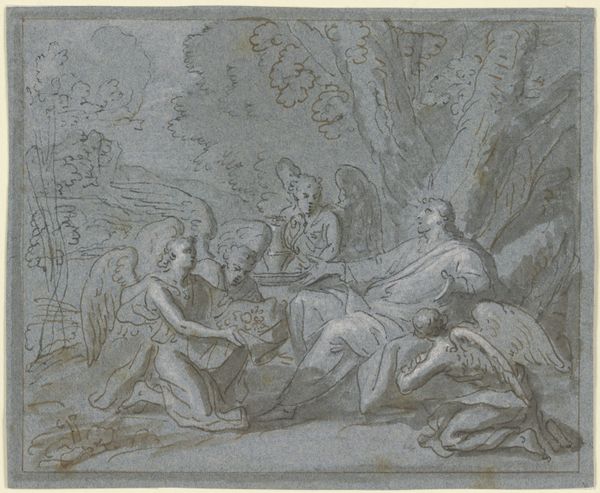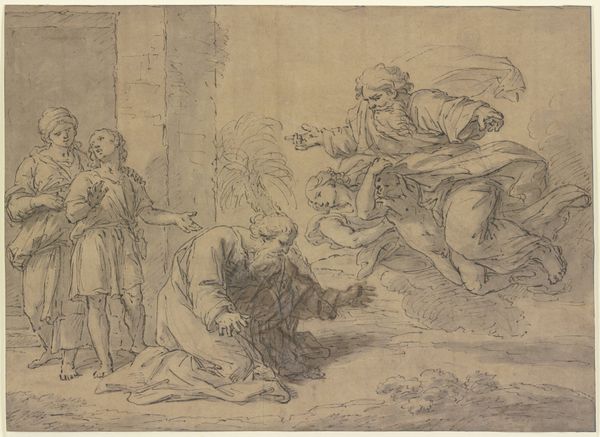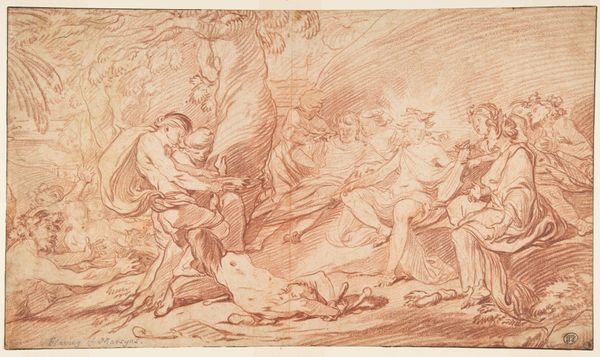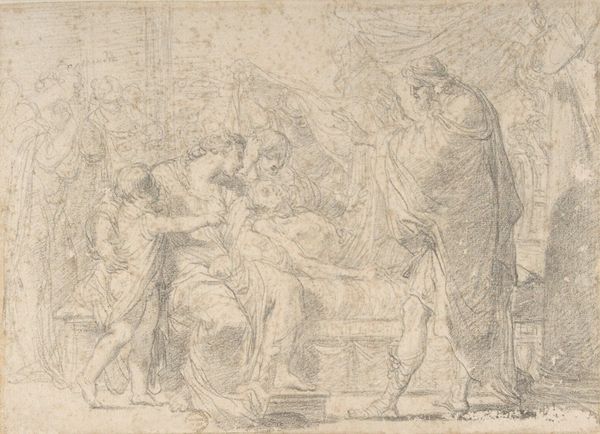
drawing, print, etching, ink, pencil
#
portrait
#
drawing
#
ink drawing
#
narrative-art
#
baroque
#
ink painting
# print
#
etching
#
pencil sketch
#
landscape
#
etching
#
figuration
#
ink
#
pencil
#
history-painting
#
academic-art
#
nude
#
male-nude
Dimensions: 11-1/8 x 15-11/16 in. (28.2 x 39.8 cm)
Copyright: Public Domain
Curator: Welcome. Let's explore "The Creation of Eve," an etching and ink drawing made sometime in the 18th century and currently held at the Metropolitan Museum of Art. What's your initial take? Editor: Stark, in a way. I mean, beyond the obvious narrative, there's a distinct lack of the kind of overt lushness one often expects from depictions of this scene. There's a sense of something incomplete, not yet fully formed. Curator: Interesting. Yes, the academic style is subdued, but notice how Parrocel renders the scene with a strategic balance between clarity and suggestion. Think about how art academies of the era aimed to illustrate ideal form, which may explain what you describe. Editor: But even within those academic constraints, isn’t the depiction problematic? Eve is almost literally reaching towards a patriarchal figure who seemingly "offers" her to Adam. She’s an object in this interaction. Curator: That reading absolutely resonates today, but within its historical context, the piece participated in broader cultural discourses. Prints and etchings like these disseminated Biblical narratives across social strata. How do we reconcile their roles? Editor: We have to consider power. While such images aimed to instruct, they also implicitly reinforced existing hierarchies. Eve's positioning, her very creation from Adam's rib, becomes a visual argument for female subordination. What choices could have challenged the norms? Curator: True. A more egalitarian composition perhaps, or emphasizing Eve’s agency in the narrative that follows. The style speaks to the moment; Etienne Parrocel clearly embraced contemporary aesthetic conventions and philosophical positions. Editor: That may be so, but even then, did no artists question or subvert this narrative? Finding such challenges—queering them, to put it plainly—would disrupt this visual and conceptual lock-in, if only slightly. Curator: A very interesting approach, one that underscores the necessity of continuous engagement and critical re-evaluation when examining artworks across historical divides. Thank you for pointing toward future potential investigations. Editor: My pleasure. Hopefully our dialogue will invite new ways of considering how even seemingly traditional artworks can foster ongoing conversations about identity, power, and representation.
Comments
No comments
Be the first to comment and join the conversation on the ultimate creative platform.
